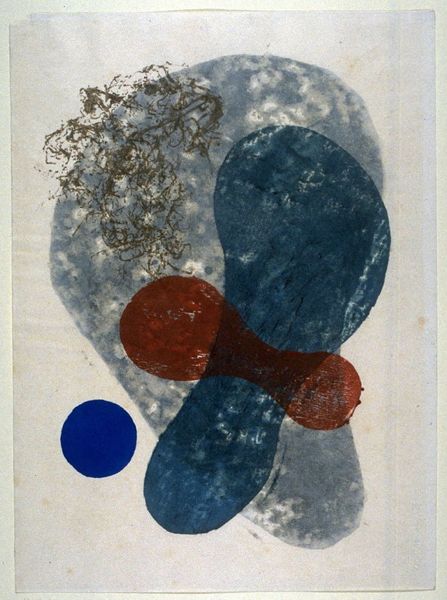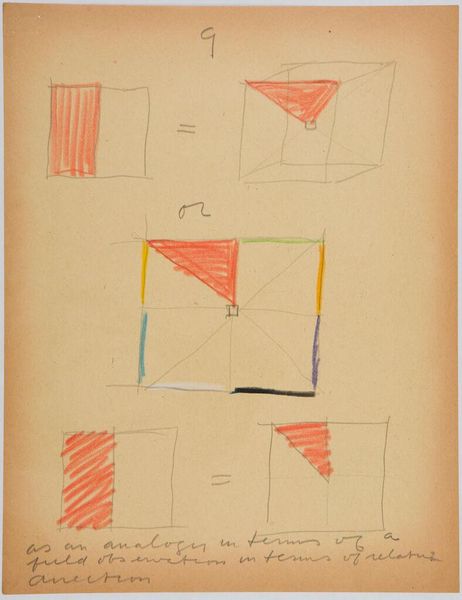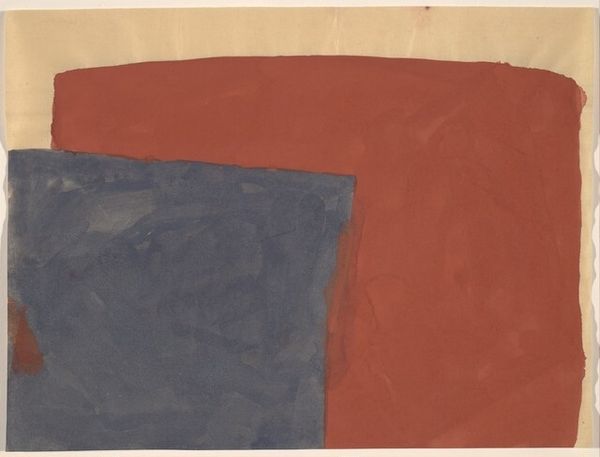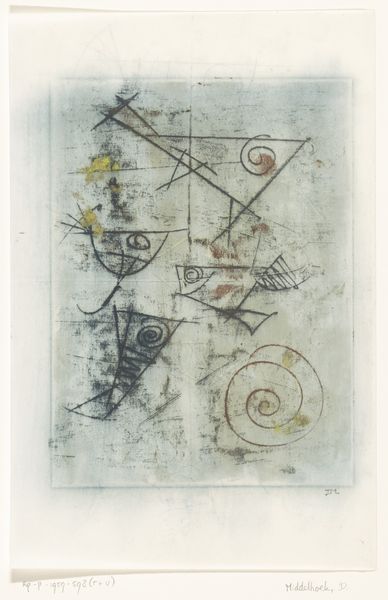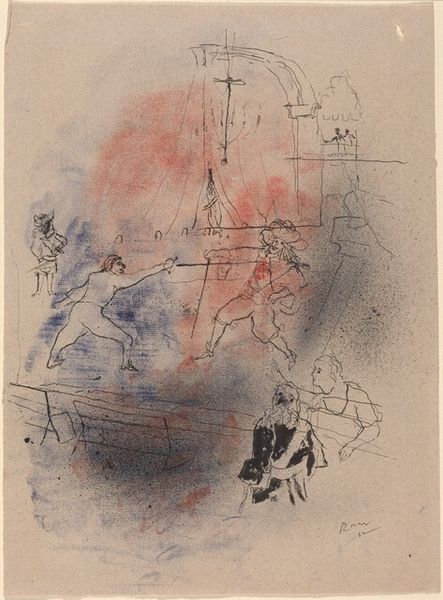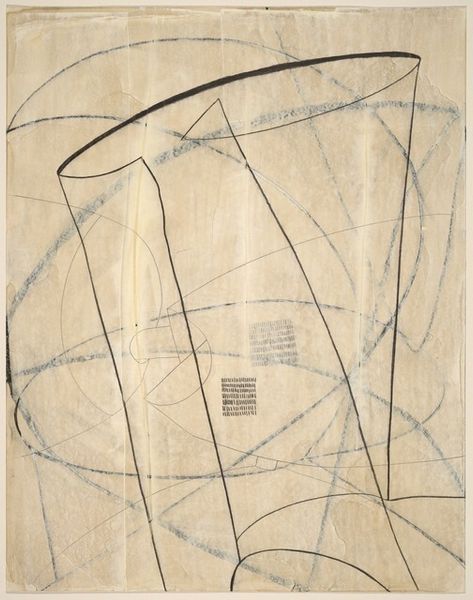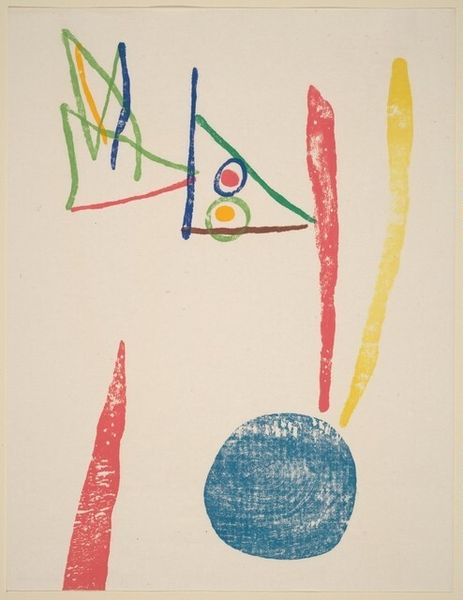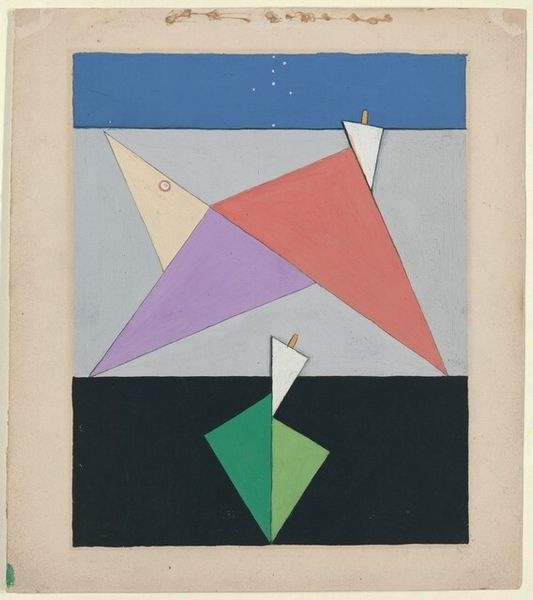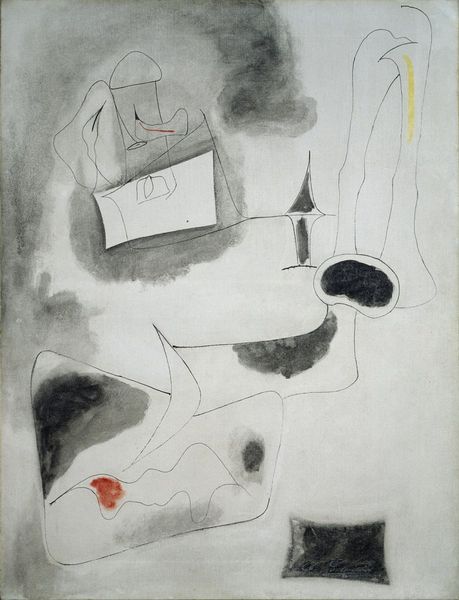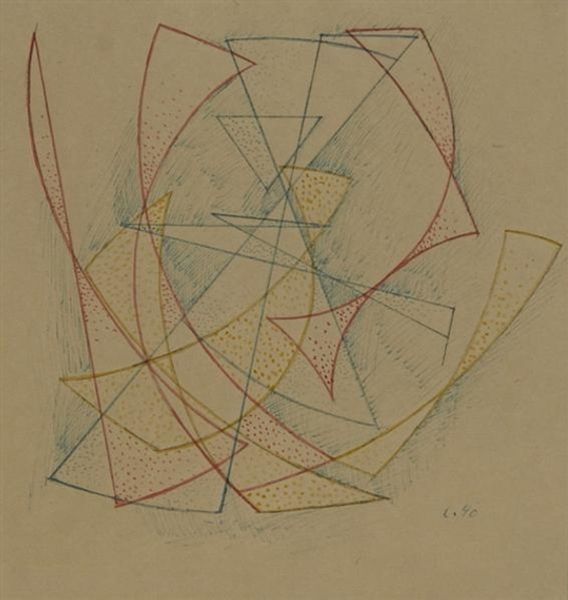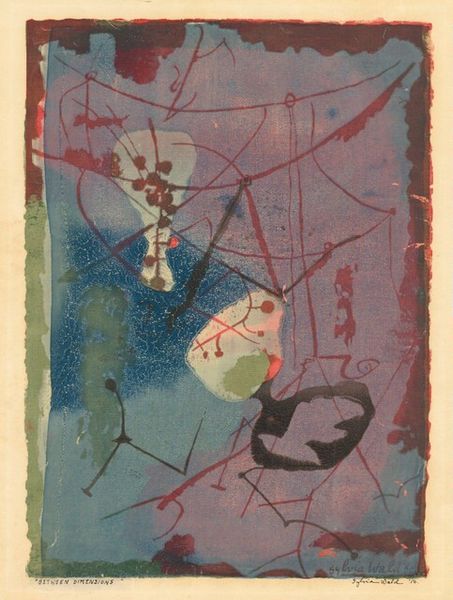
paper, watercolor, ink
#
stencil art
#
paper
#
watercolor
#
ink
#
geometric
#
abstraction
#
watercolour illustration
#
watercolor
Copyright: Public domain Japan
Curator: We are looking at "Allegory: Columbus's Egg," created in 1948 by Koshiro Onchi. He worked with watercolor and ink on paper. I’m struck by how such simple materials and techniques create something so enigmatic. What’s your initial impression? Editor: It feels like a playful experiment in form. The soft washes and the bolder lines give it a dreamlike, almost childlike quality. But, I wonder, what statement is it making through these elementary forms? Curator: I think Onchi, a pivotal figure in the sōsaku-hanga movement, really elevated the act of printmaking by hand to be fine art, disrupting older master-apprentice hierarchies. Editor: I see that, certainly, looking closer, it's evident how the application of ink and watercolor reveals the labor. Do you think his engagement with printmaking and material experimentation opens dialogue on wider political questions through the lens of art? Curator: It absolutely positions his work in dialogue with the post-war search for new aesthetic and political languages. What can be salvaged? What must be abandoned? What needs reinterpretation? The title referencing “Columbus’s Egg" even winks at the idea that often, innovative breakthroughs arrive through radical simplification. Editor: It almost makes me think about artistic communities trying to rediscover tradition in times of global crisis or societal reformation. I feel that his method almost mimics the act of rediscovery itself. Curator: His materials signal not only innovation, but also make these reflections accessible for people of different economic backgrounds. The use of more modest paper, and media that is considered less fine than oil, for example, widens his possible viewership. Editor: Considering Japan's socio-political situation after World War II, and Onchi’s historical contributions, that focus makes even more sense. The egg becomes a potent metaphor then, less about individual achievement and more about a collective reimagining. Curator: Right, in embracing abstraction through these techniques, Onchi isn't just playing with shapes and colors. Instead, he's creating visual allegories that provoke thought about history and progress and making fine art accessible. Editor: This exploration has helped to look at “Allegory: Columbus's Egg” not only as an experiment in form, but a considered reflection of a time through a range of accessible techniques and mediums. Curator: Indeed, seeing Onchi's methods through both the history of Japan's postwar reckoning as well as a material approach provides new meaning, and brings us closer to understanding his project.
Comments
No comments
Be the first to comment and join the conversation on the ultimate creative platform.

